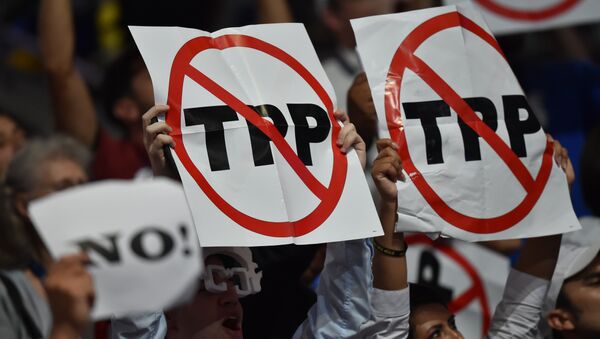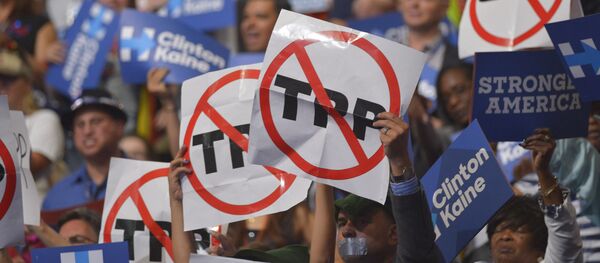Following scathing criticism of the TPP trade deal during his presidential election campaign, Trump released a video describing the trade deal as "a potential disaster for our country."
In the video outlining his policy plans for his first 100 days in office, Trump said he would pull out of the TPP and instead "negotiate fair bilateral trade deals that bring jobs and industry back."
Donald Trump is cancelling TPP on Day1 as #POTUS yet we play cat-&-mouse with EU re:SM
— Dr Teck Khong (@DrTeckKhong) November 22, 2016
There was a time when a British PM walked tall & away
Trump's win in this month's US Presidential election led many political and economic figures to claim that the TPP — signed earlier this year by 12 Pacific-rim nations, including Australia, Japan and Singapore — is dead, leading to questions about the future of free trade in the Asia-Pacific region and whether some sort of deal can be salvaged.
Support for China-Led Trade Deal
There are also suggestions that countries in the region could realign their trade preferences in a manner that could see China step in to fill the void left by the US' expected departure from the TPP.
Last week Abe told a parliamentary committee that if Trump went through with his pledge to back out of the TPP, then it could bolster plans for a China-led regional trade pact.
"There's no doubt that there would be a pivot to the Regional Comprehensive Economic Partnership (RCEP) if the TPP doesn't go forward," Abe said.
#Japan PM #Abe says #TPP "impossible" without #US, paving way for region to forge new #trade pact, closer ties with #China. #Trump
— Kang Wan Chern (@KWCTheEDGE) November 22, 2016
"The RCEP doesn't include the United States, leaving China the economy with the largest gross domestic product," Abe added.
The RCEP, which has been under negotiation since 2013, is a proposed free trade agreement consisting of 16 Asia-Pacific countries, including Japan, China, South Korea, India, Australia, New Zealand and others.
'Collapse of TPP Could Open Door for China'
Meanwhile in Australia, where the major parties remain largely in support of the TPP, government officials have also spoken enthusiastically about expanding trade opportunities in the region, signaling support for the China-led RCEP.
Canberra has not yet completely given up on the TPP, with Trade Minister Steve Ciobo saying the government would give Trump's administration time to reconsider its position.
China's reaction to Trump on TPP: Quickly move to fill the void with Chinese-led Pacific trade pact. No harsh words for US or Trump. Action.
— Rick Dunham (@rickdunham) November 22, 2016
However in an opinion piece for the Financial Times, Ciobo acknowledged that the future of the deal was looking "grim," and said the country would explore other trade options.
"With the future of the TPP looking grim, my ministerial counterparts and I will work to conclude a study on the Free Trade Area of the Asia-Pacific, which sets out agreed actions towards a future free trade zone."
Labor & Liberal just voted against my motion calling for Aust to dump the TPP. Ridiculous given the new Trump-era in the USA.
— Sarah Hanson-Young (@sarahinthesen8) November 21, 2016
Some political commentators have predicted a trade shift towards Beijing, with Dr. John Short, political analyst from the University of Maryland, telling Sputnik that the "collapse of the TPP may leave the door open for China."
"Under the TPP agreement, China was purposely left out. So the collapse of the TPP may leave space for China to propose a new free trade agreement," Dr. Short told Sputnik.



